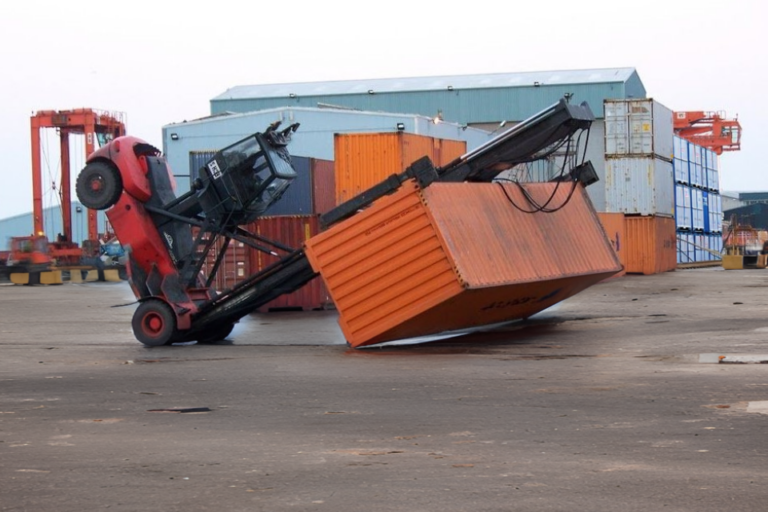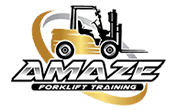
In the fast-paced world of material handling, forklifts play a crucial role in ensuring the smooth flow of goods within warehouses and industrial settings. However, the safe operation of forklifts goes beyond merely maneuvering the equipment. Understanding and adhering to load capacities are paramount to ensuring a secure working environment. In this blog post, we will delve into the intricacies of forklift load capacities, shedding light on the importance of proper training to guarantee safe material handling.
The Significance of Forklift Training:
Before delving into the specifics of load capacities, it is essential to emphasize the pivotal role of forklift training in promoting a culture of safety within the workplace. Forklift accidents can lead to severe injuries, damage to property, and even fatalities. Proper training not only reduces the risk of accidents but also enhances the efficiency of material handling operations.
Forklift Training is not just a regulatory requirement; it is an investment in the well-being of employees and the overall success of the business. Certified operators bring a heightened awareness of safety protocols, equipment functionality, and load capacity considerations, contributing to a secure and productive work environment.
Understanding Forklift Load Capacities:
Load capacity refers to the maximum weight a forklift is designed to lift and carry safely. Exceeding this limit can lead to serious accidents, including tip-overs and structural failures. Several factors influence a forklift’s load capacity, and comprehending these elements is vital for safe material handling.
Manufacturer’s Guidelines:
Manufacturers provide load capacity information specific to each forklift model. Operators must familiarize themselves with the manual, paying close attention to load charts and guidelines. Failure to adhere to these specifications can compromise both safety and the forklift’s performance.
Load Center:
The load center is the point where the majority of the load’s weight is concentrated. Forklifts are designed to carry loads with a specified load center, typically 24 inches. Deviating from this standard can affect the forklift’s stability and load-bearing capacity.
Mast Tilt and Height:
The mast tilt and height at which a forklift lifts a load impact its stability. Tilting the mast forward or backward alters the load’s center of gravity, influencing the forklift’s ability to carry the load safely. Forklift operators must be trained to assess the impact of mast tilt and height on load capacities.
Attachments and Accessories:
Forklift attachments, such as side-shifters or clamps, can alter a forklift’s load-bearing capacity. It is crucial to account for these modifications when calculating the safe load capacity. Training programs should cover the proper use of attachments and their implications on overall forklift performance.
Terrain and Surface Conditions:
The working environment significantly affects a forklift’s stability and load-carrying capabilities. Uneven surfaces, ramps, or slippery conditions can impact the forklift’s ability to operate safely. Training programs should address the importance of adjusting load capacities based on the specific conditions of the workplace.
Forklift Training: Mitigating Risks and Ensuring Compliance
Forklift training is the linchpin of a robust safety strategy in any material handling operation. A well-structured training program encompasses theoretical knowledge, practical skills, and a commitment to ongoing education. Here are some key elements of an effective forklift training program:
Classroom Instruction:
Classroom sessions should cover theoretical aspects such as load capacity calculations, understanding load charts, and the impact of center of gravity on forklift stability. Emphasis should also be placed on regulatory requirements and safety standards.
Hands-On Practical Training:
Practical training is indispensable for forklift operators. Hands-on sessions should focus on proper load handling techniques, mast tilt management, and the use of attachments. Practical exercises allow operators to apply theoretical knowledge in a controlled environment.
Simulations and Virtual Reality:
Integrating technology, such as simulations and virtual reality, enhances the training experience. Simulations provide a risk-free environment for operators to practice handling various loads and challenging scenarios, reinforcing their skills and decision-making abilities.
Regular Refresher Courses:
Safety is an ongoing commitment. Regular refresher courses ensure that forklift operators stay updated on the latest safety guidelines, equipment changes, and best practices. Continuous education helps maintain a safety-conscious culture within the workplace.
Advanced Load Capacity Management: Ensuring Precision in Material Handling
Beyond the fundamentals of load capacity understanding, advanced practices in load management can further elevate safety standards and operational efficiency in material handling.
Dynamic Load Assessments:
Implementing dynamic load assessments involves continuously monitoring and adjusting load capacities based on real-time conditions. This approach recognizes that loads can change during operations due to shifting weight distributions, product stacking, or even variations in packaging. Forklift operators trained in dynamic load assessments are better equipped to adapt to changing scenarios, mitigating potential risks.
Load Testing and Simulation:
Load testing and simulation exercises provide hands-on experience in handling challenging loads without the associated risks. These exercises expose operators to scenarios like elevated loads, off-centre weights, or unconventional shapes. By incorporating these elements into training, operators develop the skills to manage diverse loads effectively, enhancing their overall competency.
Integration of IoT and Telematics:
Leveraging the Internet of Things (IoT) and telematics technology enables real-time monitoring of forklift performance and load conditions. Sensors and data analytics can alert operators to potential issues, such as exceeding load capacities or uneven weight distribution. Integrating these technologies into forklift training programs prepares operators for the digital era of material handling, where data-driven insights contribute to safer and more efficient operations.
Collaborative Training Initiatives:
Encouraging collaboration between forklift operators, supervisors, and safety personnel fosters a culture of collective responsibility. Operators can share insights and experiences, enhancing the collective knowledge base. Group training sessions and collaborative problem-solving exercises provide a forum for exchanging best practices and addressing specific challenges related to load capacities.
Conclusion:
In conclusion, understanding forklift load capacities is not just a technical aspect of material handling; it is a critical component of workplace safety. A comprehensive forklift training program, with a focus on forklift training, equips operators with the knowledge and skills to navigate the complexities of load capacities confidently. By prioritizing safety through proper training, businesses can create a work environment that minimizes the risk of accidents, protects employees, and optimizes material handling efficiency. Forklift operators who are well-trained and informed play a pivotal role in ensuring that forklifts are used to their full potential while prioritizing the safety of everyone in the workplace. At Amaze Forklift training, we offer top quality training and certification for all kinds of forklifts.
